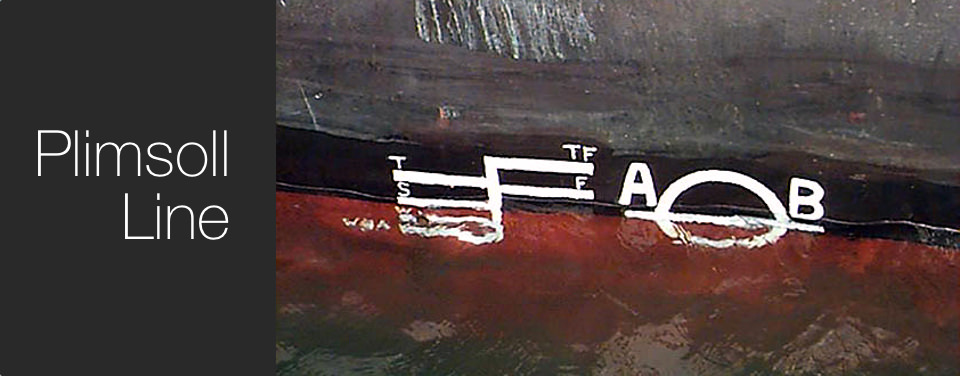What is a Plimsoll line?
A commercial ship is properly loaded when the ship’s waterline equals the ship’s Plimsoll line.

Plimsoll mark on the hull of a floating ship.
The Plimsoll line is a reference mark located on a ship’s hull that indicates the maximum depth to which the vessel may be safely immersed when loaded with cargo. This depth varies with a ship’s dimensions, type of cargo, time of year, and the water densities encountered in port and at sea. Once these factors have been accounted for, a ship’s captain can determine the appropriate Plimsoll line needed for the voyage (see above image):
- ITF = Tropical Fresh Water
- T = Tropical
- F = Fresh Water
- S = Summer
- W = Winter
- WNA = Winter North Atlantic
- AB = Letters indicating the registration authority (American Bureau of Shipping in the image shown; the circle with the line through it indicates whether or not the cargo is loaded evenly)
Samuel Plimsoll (1824–1898) was a member of the British Parliament who was concerned with the loss of ships and crews due to vessel overloading. In 1876, he persuaded Parliament to pass the Unseaworthy Ships Bill, which mandated marking a ship's sides with a line that would disappear below the waterline if the ship was overloaded. The line, also known as the Plimsoll mark, is found midship on both the port and starboard hulls of cargo vessels and is still used worldwide by the shipping industry.
Social